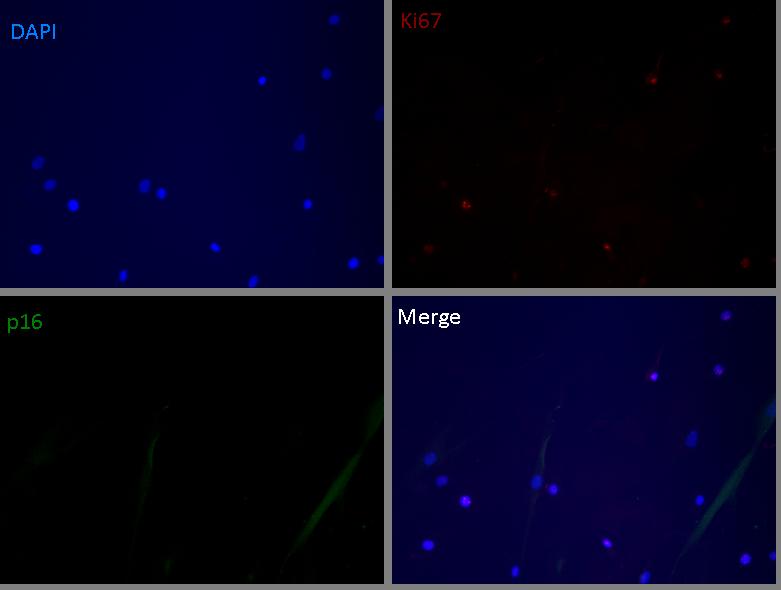Sam received his B.S. in Environmental Biology from The State University of New York (SUNY), College of Environmental Science and Forestry (ESF) in Syracuse, NY. As an undergraduate, Sam engaged in a wide variety of research projects. He investigated the bioconversion of renewable resources to useful end products in Dr. James Nakas’ microbiology laboratory. As a research aide in Dr. John Farrell’s SUNY ESF laboratory at Thousand Island Biological Station, he studied aquatic ecology and management of aquatic resources. In the summer of 2012 as part of the SENS Research Foundation Summer Internship Program, Sam joined Dr. Judith Campisi’s laboratory at the Buck Institute for Research on Aging to work on a project dealing with the senescence phenotype of mesenchymal stem cells:
Mesenchymal Stem Cell Senescence
“Mesenchymal stem cells (MSCs) are adult stem cells found in bone marrow, in fatty tissues, and around blood vessels. MSCs are important for wound healing, tissue regeneration, and immune suppression. Currently, multiple clinical trials are investigating whether MSCs can be used as treatment for diseases such as graft-versus-host disorder and rheumatoid arthritis.
While the senescence of MSCs and the harmful effect of the senescence-associated secretory phenotype (SASP) has been widely observed, little is known about the mechanisms and physiological implications of MSC senescence. My summer project involved studying the MSC senescence phenotype – in particular, the typical phenotypic markers of senescence: growth arrest, enlarged morphology, senescence-associated B-galactosidase expression, high levels of cell cycle inhibitors, and a SASP.
My project yielded a wealth of information about MSC senescence, which will serve as the foundation for future studies. I am already pursuing one implication from my studies. Immunofluorescence and western blotting experiments suggest that there may be multiple types of senescence in MSCs: one form that is an artifact of culture stress and a second, more physiologically relevant form that is a response to DNA damage.”

Figure 1.
Future Plans:
After the success of his summer project, Sam was invited by the Campisi lab to continue his research for a year of full-time funding by the SENS Research Foundation. Since his summer internship ended, Sam has made a number of novel discoveries. For instance, the SASP of MSCs may be different than other cells due to their immunosuppressive secretions. Sam has already identified one senescence-associated immunosuppressive factor that may be implicated in two important biological phenomenon: the ability of senescent cells to evade immune-surveillance and age-related decline of immune system function. Sam hopes to identify additional immunosuppressive MSC SASP factors with yet another year of funded research in the Campisi lab before pursuing a Ph.D. in bioengineering in the fall of 2014.


